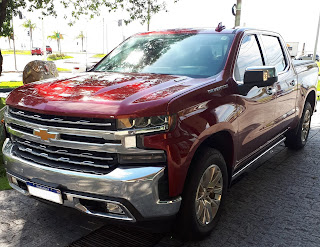1 - Cummins ISF2.8/R2.8: as it caters to Asian utility vehicles with engine bays quite cramped, even though a rear-wheel drive setup would also be required to ease the task of overcoming clearence issues in a Subaru, the Cummins ISF2.8 or its aftermarket-oriented R2.8 derivative available in the United States and Canada would be among my possible choices. I am quite partial to Diesels, and since the R2.8 is meant as an option to the gasoline-powered ubiquitous small-block V8 engines more frequently swapped into nearly everything, it seems quite down-to-earth compared to other engines which would require major structural changes to allow a clean-looking installation;
2 - Chevrolet small-block V8: an engine that nearly everyone loves. Either some first-generation one or the latest designs with some newer tech incorporated, the relatively compact packaging makes it a cost-effective option for high output;
3 - Nissan TB48DE: this straight-six masterpiece, which currently has a limited availability along the Y61 Nissan Patrol, has a strong aftermarket scene in the Middle East. Even though it usually has a quite conservative tune, turbocharging and other tuning allow it to exceed 1000hp with some reliability;
4 - Toyota 1GR-FE: not exactly a favorite of mine, but it also has some aftermarket support overseas which is also interesting when it comes to a performance enhancement. Toyota being a stakeholder on Fuji Heavy Industries also makes it sound more reasonable at all;
5 - Chrysler Hemi Hellcat: one of the most exciting engines in recent times, sure the Hellcat would be a good option too.



